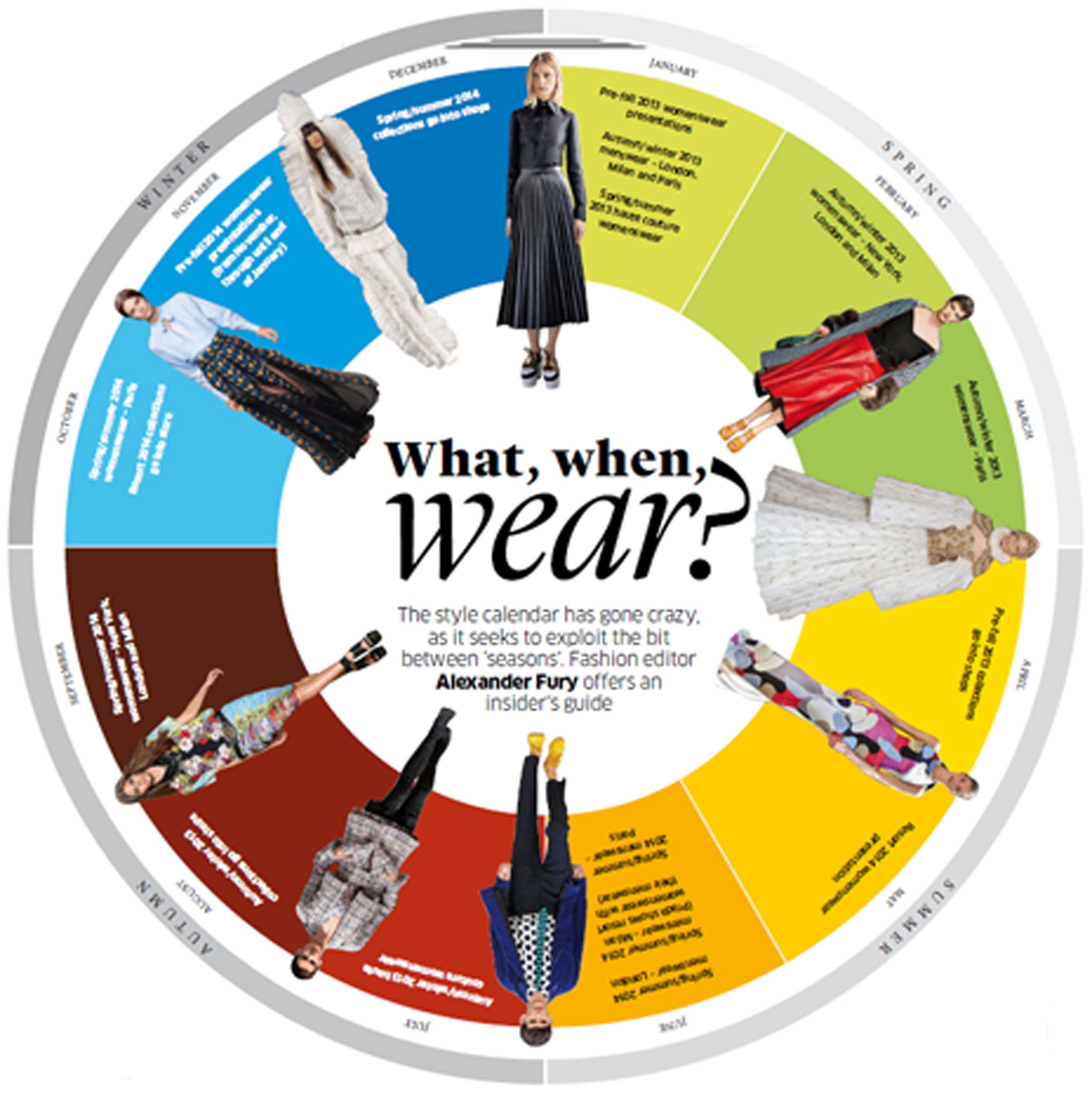What, when, wear? An insider’s guide to pre-collections
The style calendar has gone crazy, as it seeks to exploit the bit between ‘seasons’. Fashion editor Alexander Fury offers help

Your support helps us to tell the story
From reproductive rights to climate change to Big Tech, The Independent is on the ground when the story is developing. Whether it's investigating the financials of Elon Musk's pro-Trump PAC or producing our latest documentary, 'The A Word', which shines a light on the American women fighting for reproductive rights, we know how important it is to parse out the facts from the messaging.
At such a critical moment in US history, we need reporters on the ground. Your donation allows us to keep sending journalists to speak to both sides of the story.
The Independent is trusted by Americans across the entire political spectrum. And unlike many other quality news outlets, we choose not to lock Americans out of our reporting and analysis with paywalls. We believe quality journalism should be available to everyone, paid for by those who can afford it.
Your support makes all the difference.Last Tuesday, Karl Lagerfeld took over the Texas State Fair and shipped 900 guests across the world to present his latest collection for the house of Chanel. That collection? Not couture or ready-to-wear, but Chanel’s pre-fall 2014 range.
Pre-fall 2014 – the season that comes before “fall” (that’s autumn to you and me). Don’t they mean summer? And aren’t we barely into 2013’s winter, let alone thinking of what we may want to wear this time next year? If it all sounds like nonsense, honestly, it is.
That is not a comment on Lagerfeld’s designs, but rather on fashion’s current, confused calendar, a calendar that kicked-off with the womenswear pre-fall presentations back in November, and runs through until February. In the same time span, we’ll see the 2014 winter menswear collections, and a handful of spring haute couture shows. Then the womenswear autumn/ winter shows begin, in February.
This means, for a talent such as Raf Simons – who designs womenswear for Christian Dior, and an eponymous menswear range – the next two months demand no fewer than four separate collections, catering for three different seasons. The entire fashion calendar, it seems, is out of whack.
Look at the diagram above. That’s a rough plotting of the fashion year 2013, but it’s representative of the industry calendar, that now leaps from autumn/winter, to spring/summer, back to autumn/winter – without even taking into account “pre-fall” or “resort” wear (summery clothes sold as the cold sets in – the name is a nod to those who can afford warm winter holidays). Those are the odd names that seem to have stuck for a couple of in-between seasons: the pre-collections.
On planet fashion, the seasons run from spring/summer to pre-fall, to autumn/winter and resortwear and back to spring again. When you try to unravel the collections schedule, your head (and eyes) will spin. Because it makes no sense. Way back when, calendars were a way of bringing order into the world, dividing time, pulling us back from chaos – a mark of civilisation.
What does that tell us about fashion today? It is waiting for is a leader, someone with the chutzpah to shake the system up. Phoebe Philo of Céline refused to show images of her latest pre-collection until the garments actually hit the stores. However, that meant we saw her resort 2014 collection after her spring 2014 collection – which was even more befuddling.
The pre-collection makes sense where it counts: cold, hard economics. Jack McCollough and Lazaro Hernandez of the New York label Proenza Schouler told me their pre-collections make up roughly 70 per cent of their sales. “More commercial, less expensive,” is McCollough’s simple summary of them. They have “a really long shelf-life”.
But despite the proliferation of seasonal collections, ultimately they are meaningless when coupled with the global fashion market, and the demands of the Southern hemisphere. Our winter is their summer. How do designers deal with that?
Ah, the designers. They often get forgotten, the human hands behind these luxury behemoths. Equally overlooked is the fact that fashion isn’t just frocks, but – at its best – it’s a creative expression, a vehicle for change. That’s what actually motivates you to get out your credit card and hand over the money. Maybe that will be the thing that finally slows down the ever-increasing speed of the fashion carousel: that, and the realisation that it’s quality and not quantity that counts.
Join our commenting forum
Join thought-provoking conversations, follow other Independent readers and see their replies
Comments